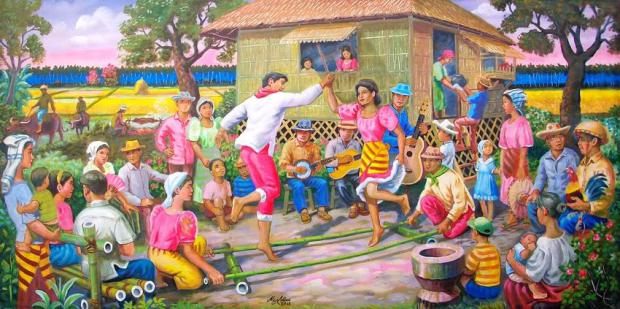Sinulog
The Sinulog is a ritual dance that is performed in honor of Santo Niño.

The Sinulog is a ritual dance that is performed in honor of Santo Niño.

The Binasuan is performed by dancers as they carry full wine glasses in both hands and on top of their heads. Wine is traditionally used in the dance, but any dark-colored beverage will do. The dance often involves balancing tricks, so there are no specific moves that are set in stone. If you'd like to try the Binasuan though, these steps will get you started. Consider practicing with empty, plastic cups until you get the hang of the movements.

As the best known and most popular dance of the Phillipines, Tinikling is the country's national dance. To perform Tinikling, two dancers beat, tap, and slide bamboo poles on the ground. The bamboo serves as both a percussion instrument and a part of the dance itself. Tinikling can be tricky because both primary dancers must move quickly to avoid getting a foot caught by the fast-moving poles.
1. HABANERA STEP
HABANERA STEP- step, close, step
2. MINCING STEP
MINCING STEPCROSS STEP
The history of Philippine folk dancing
Each of the three regions of the Philippines has their own unique languages, history, and traditions. One type of folk dance that comes from the Luzon region is the Idaw dance, which depicts hunting rituals that were performed before tribal wars. Francisca Reyes Aquino is known to be the mother of Philippines folk dance. She wrote several books on the folk dances and also taught people dances.